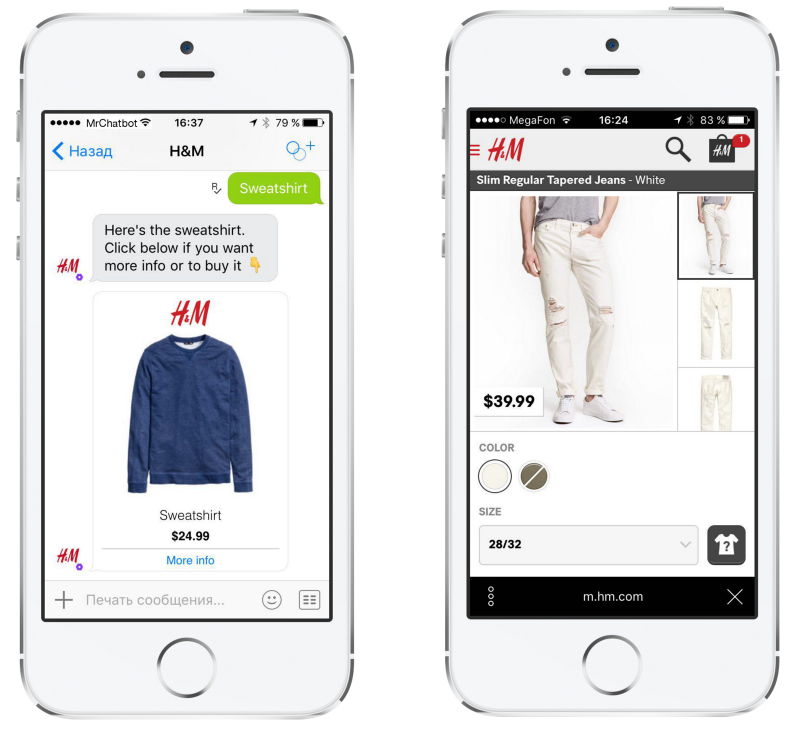Cashing in with Chatbots

As e-commerce and m-commerce continue to flourish, it’s necessary to think about the interactions and communication with customers before, during, and after purchases.
Customers seek immediate responses to their needs, and that’s where the increase use of chatbots come in. Chatbots are an indispensable tool allowing retailers and brands to engage with customers in a more personalized, and efficient way. Chatbots help handle interactions with customers and simulate the shopping that buyers get in a retail store.
So what is a chatbot?
A chatbot is an automated program that simulates conversations through artificial intelligence. They are used to answer queries, and handle specific requests by mimicking human thinking and decision making. Examples include receiving personalized recommendations based on previous orders, or the ability to purchase products within one channel.

In 2016, H&M launched a chatbot on a messenger app Kik allowing customers to see, share and purchase products by answering a few simple questions. (Image credit: H&M/Chatbot Magazine)
How Chatbots can help boost sales:
- 24/7 Assistance: Chatbots are not limited to a time or physical location and can help users access information around the clock
- Consistent Customer Service: Chatbots provide controlled responses and scenarios by answering simple queries or helping with payments
- Personalized experience boosts loyalty. Chatbots reply automatically and provide an engaging and interactive experience. A customer or potential customer can enjoy this personalized experience and lower their chance of moving to a competitor.
- Better understanding of consumer. Chatbots are a data mine for capturing feedback and product reviews from users. Based on machine AI learning, as a chatbot interacts more and more with a human, they increase the accuracy of their responses through self-learning. They can then offer more personalized information and solutions based on needs or previous interactions.
- Ability to offer transactions. Facebook messenger and Kit chatbots offer customers the option to pay directly. They can also respond to consumers if there are delays or products out of stock.
Voice-activated bot personalities are also becoming increasingly popular. For example, Google Home, Apple’s Siri, or Amazon’s Alexa. Combining chatbot technology and voice recognition can provide a seamless experience where users can control devices in their own home, get information, order products, and help fulfill purchases.
Even luxury brands such as Tommy Hilfilger and Burberry are entering the chatbot sphere. Following NY Fashion week in September 2016, Burberry offered customers and fans to a sneak preview of collections and the ability to shop for pieces directly from the app. The bot even allows the option to book an Uber ride to a store after a live chat with a consultant.
The popularity of chatbots are only growing, and an estimated 80% of companies plan to have chatbots by 2020. American Eagle Outfitter’s Aerie chatbot has exchanged at least 4 million messages with customers since its launch in 2016, with a 25% click-through rate to its website. According to Aerie’s CTO, using chatbots have doubled the average number of users added monthly across all social channels combined.
While they won’t replace human interaction, it is an important asset to boost efficiency and provide engagement and awareness, and let the customer get more access to the brand. Choose what to use chatbots for like helping to find products and answer simple questions, or direct them to where they can receive more information, but save the more complex customer service requests to a real employee.

 English
English  French
French  Italian
Italian  Spanish
Spanish 




